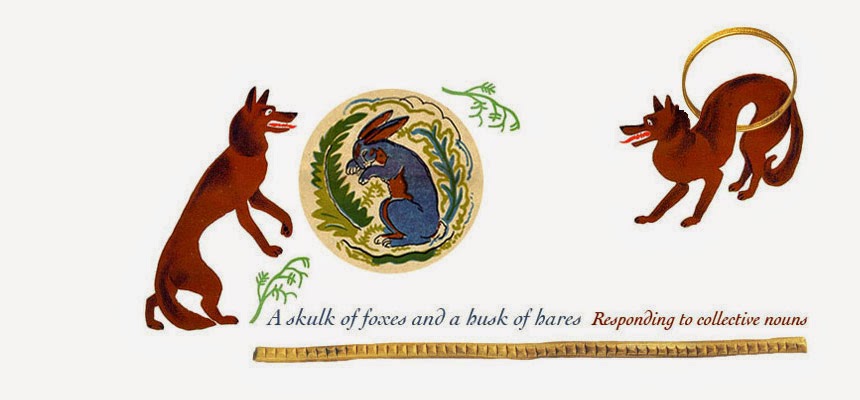
{Doris thought it was only a matter of time before someone got hurt with all this tomfoolery. Pencil drawing, Elaine Haby. (Please click to see this larger.)}
Hares, and rabbits too, for that matter, have long held an attraction for me. You already know of my weakness for foxes, well, tonight I’m sharing my enthusiasm for hares, and as with foxes, the books I poured over as a child seem to explain a good deal of my fondness. Reading, and being read, The Velveteen Rabbit (or How Toys Become Real by Margery Williams) and other such books ensured the outcome.
There was once a velveteen rabbit, and in the beginning he was really splendid. He was fat and bunchy, as a rabbit should be; his coat was spotted brown and white, he had real thread whiskers, and his ears were lined with pink sateen. On Christmas morning, when he sat wedged in the top of the Boy's stocking, with a sprig of holly between his paws, the effect was charming.Born also in the Chinese Year of the Rabbit, those long-footed, lop-eared creatures look magnificent to one. And the tails! Who could go past the tail? But before I muddle my hares and rabbits further, let me tell you this…
Of the family Leporidae of the order Lagomorpha.There now, don’t you feel better informed on the subject?
Distributed throughout the world, hares and rabbits have many common characteristics. Rabbits and hares are gnawing animals like rats, mice, and squirrels. They have the same type of strong, chisel like front teeth.
Although the common names rabbit and hare are often used interchangeably, in zoological classification the species called rabbits are characterised by their offspring that are born naked and blind, and by their habit of living in colonies in underground burrows. In contrast, species designated zoologically as hares are born furred and with vision, and the adults build a simple nest and rarely live socially. The hare is also generally larger than the rabbit and has longer ears with characteristic black markings. Moreover, the skulls of rabbits and hares are distinctly different.
The Norse goddess Freyja had several hare attendants, and sailors consider the hare so unlucky that they cannot be mentioned at sea, or so I’ve been lead to believe. They can out jump any rabbit, and according to a Cornish superstition, a young girl who dies after being abandoned by her lover will turn into a white hare in order to pursue her faithless love. And should ever you chance upon a group (which is quite rare for they are largely solitary creatures) you can say you’ve seen a husk of hares!
On with a few more of the visuals, I say.

{Mad as March hares. Watercolour and pencil drawing, Louise Jennison.}
{Hare dreams of red flowers and blue birds. Oil on MDF, Elaine Haby.}

{Making like a mountain. Digital collage, Gracia Haby.}

{In the library for the blind, the hare went about her business unbothered. Digital collage, Gracia Haby.}

{Trying not to blink. Digital collage, Gracia Haby.}
